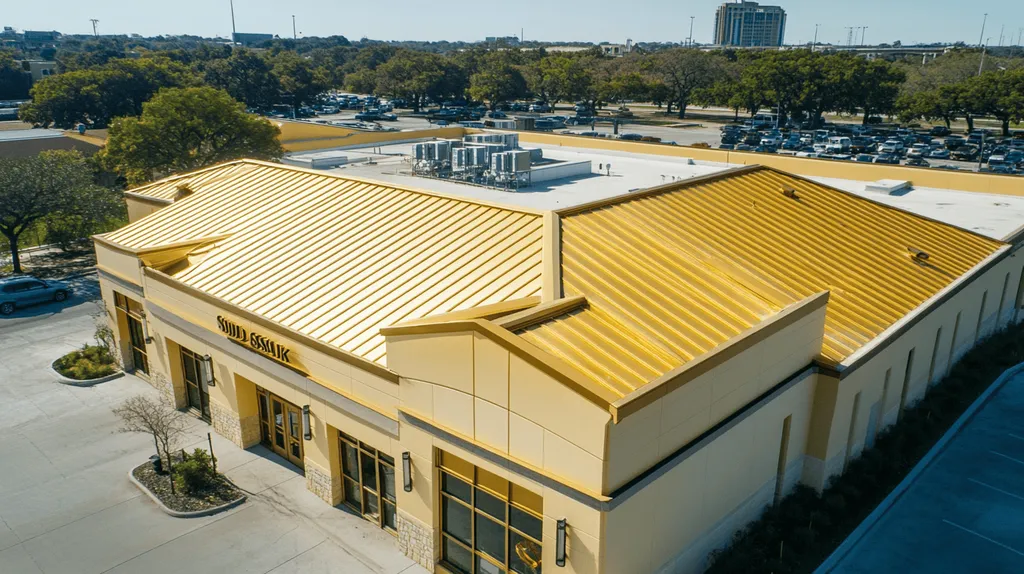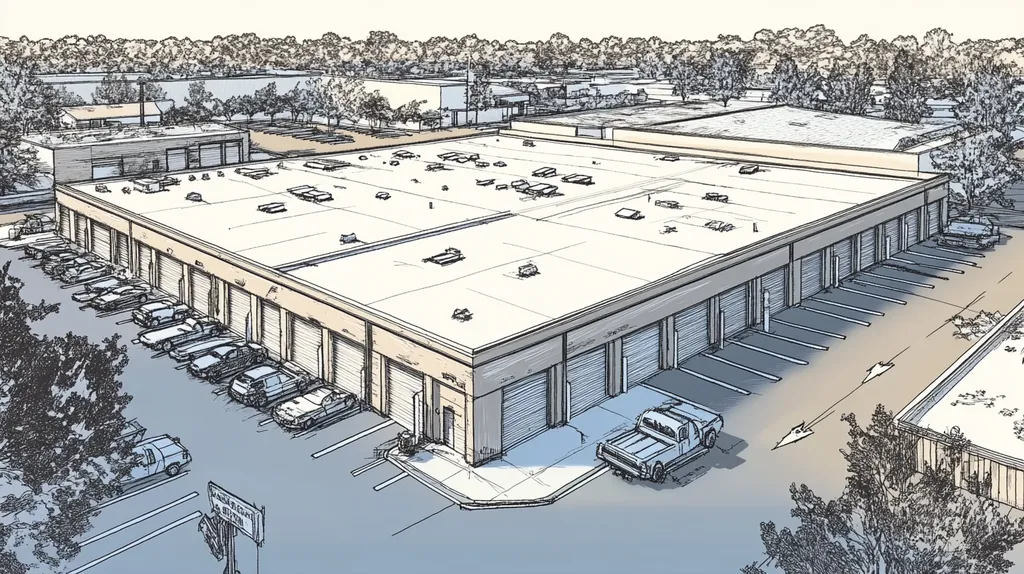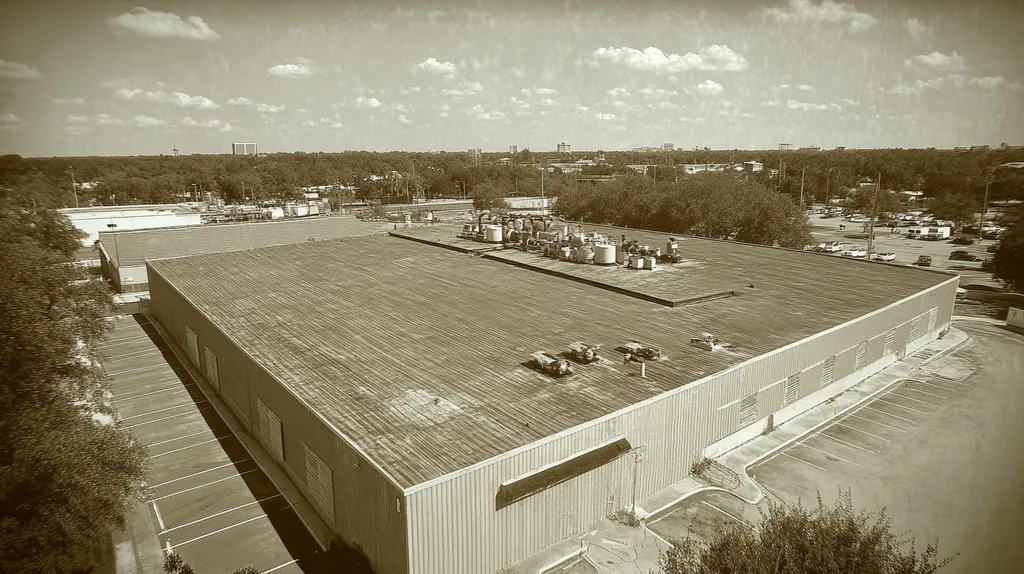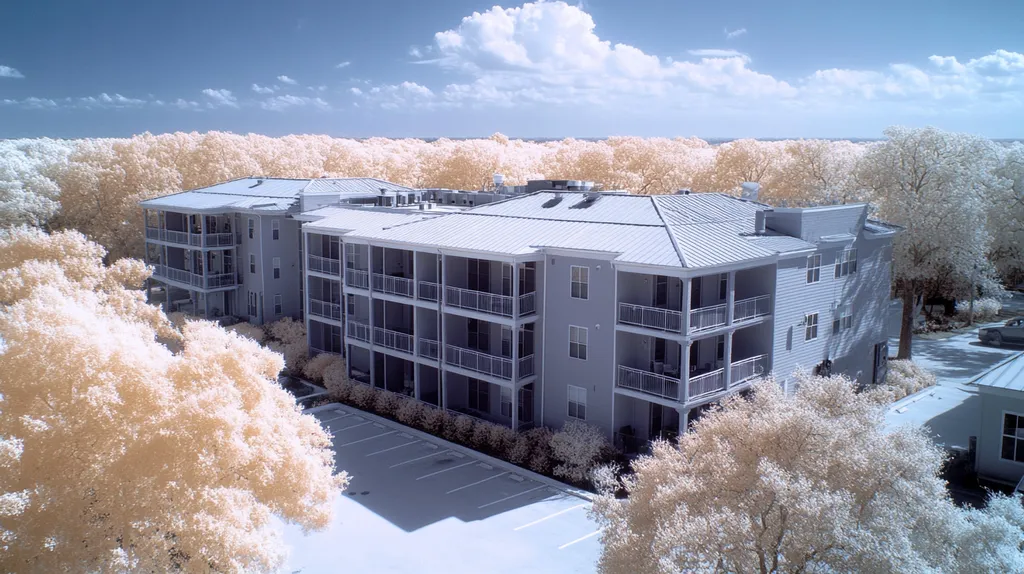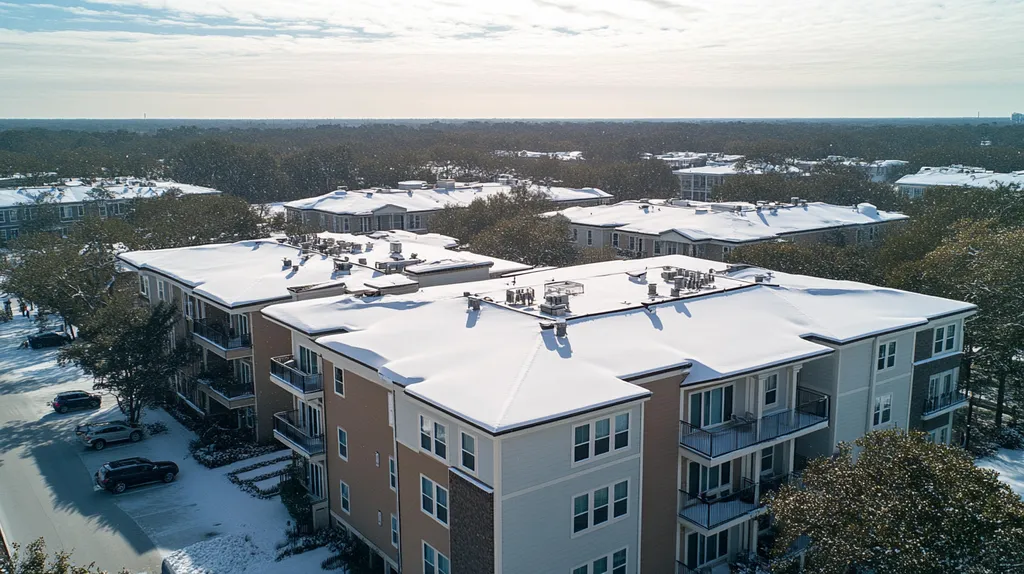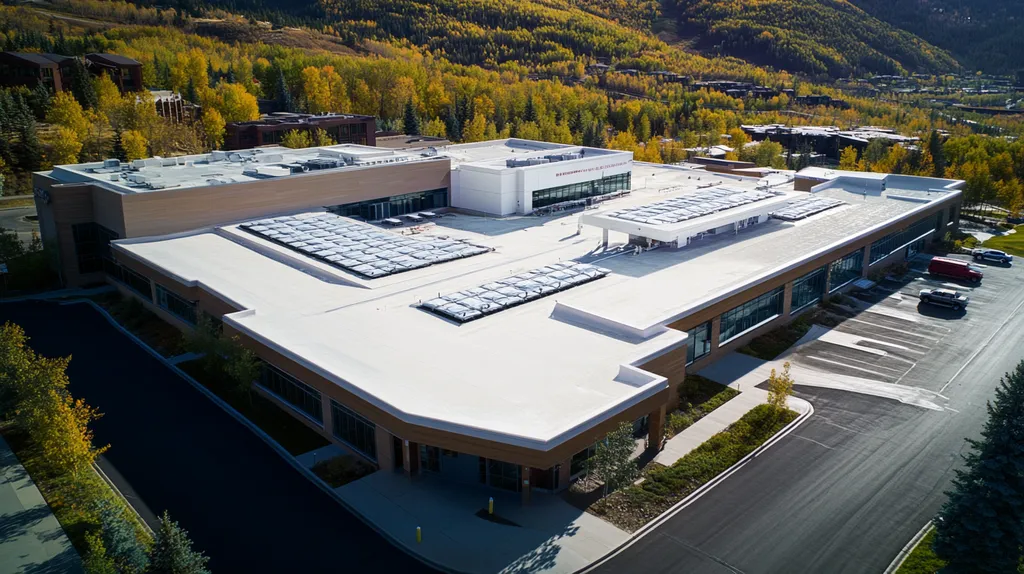In the high-stakes world of industrial roofing, performance benchmarks aren’t just numbers—they’re the difference between a roof that lasts 20+ years and one that fails prematurely, potentially causing millions in damage.
Studies show that properly specified roof coatings can extend service life by up to 15 years, while mismatched solutions often fail within 24 months.
For facility managers and property owners, understanding these critical metrics—from UV resistance to adhesion strength—has become essential for making informed decisions that protect their substantial investments.
This comprehensive guide decodes the key performance indicators that separate superior industrial roof coatings from subpar solutions, empowering readers to evaluate options with confidence.
SECTION 1: THE BASICS EXPLAINED
Navigating the world of performance benchmarks for industrial roof coatings is not just a good idea—it’s essential for property owners and facility managers. Neglecting to consider these benchmarks can lead to serious consequences, including severe roof damage and exorbitant repair bills. In fact, it has been shown that roofs with subpar coatings can suffer up to a 30% reduction in their lifespan, diminishing a building’s value and functionality. By grasping these metrics, decision-makers can choose coatings that protect their investments and extend the life of their roofs. This section will break down what these benchmarks entail, why they’re vital, and how they come into play.
What It Is (In Plain Language)
Performance benchmarks for industrial roof coatings are specific criteria that gauge how effectively a coating performs. These criteria—such as durability, weather resistance, and reflectivity—help determine the coating’s ability to shield roofs from varying environmental challenges.
A top-notch coating should fend off UV damage while providing reliable waterproofing. These attributes are crucial for maintaining a roof’s structural integrity over time. By understanding these benchmarks, property owners can make well-informed choices when it comes to selecting the right coating solution.
It’s important to note that not all coatings are created equal; they often cater to different environmental conditions or specific needs. Familiarity with these criteria allows facility managers to choose the ideal product tailored to their building’s requirements, boosting overall performance.
In essence, performance benchmarks serve as a foundational tool for evaluating roof coatings, offering invaluable guidance for making choices that align with long-term objectives.
Why It Matters (To Your Building)
The selection of industrial roof coatings plays a critical role in both a building’s operational efficiency and financial wellbeing. Inferior coatings can lead to troublesome leaks, structural issues, and skyrocketing energy costs due to poor insulation. Conversely, coatings that meet high performance benchmarks can prolong a roof’s lifespan and lower maintenance expenses.
Consider that an appropriately chosen coating can reflect UV rays, cutting cooling costs by as much as 25%. These savings can accumulate into significant amounts over the years. Moreover, roofs equipped with effective coatings are less susceptible to algae and mold growth, which can compromise indoor air quality and contribute to health-related employee absences.
Additionally, adhering to industry standards can boost a building’s resale value. A reliable, high-performance roof makes a property more appealing to potential buyers or tenants, ensuring peace of mind regarding future maintenance issues.
Ultimately, grasping the importance of these benchmarks isn’t merely about aesthetics; it’s a vital consideration for the health and sustainability of a commercial property.
How It Works
The performance of roof coatings is evaluated through a variety of tests that compare them against established benchmarks. These assessments typically cover aspects like adhesion, flexibility, and resistance to environmental challenges.
A common benchmark is the coating’s ability to endure extreme temperatures. High-quality coatings remain flexible in both chilly and sweltering conditions, preventing the risk of cracks and brittleness. The assessment process usually follows standardized protocols to ensure accurate and reliable results.
Reflectivity is another critical element; coatings with superior solar reflectance can effectively lower roof surface temperatures, yielding reduced cooling costs for buildings. Techniques such as the Solar Reflectance Index (SRI) quantify these beneficial characteristics.
Furthermore, proper installation is crucial for a coating’s performance. Coatings must be applied under optimal conditions to maximize effectiveness—failure to comply with manufacturer specifications may lead to premature coating failure and the need for costly repairs down the line.
By understanding how these benchmarks operate, decision-makers gain valuable insight that guides them in investing in solutions that truly protect and enhance their industrial properties.
SECTION 2: PRACTICAL APPLICATIONS
Understanding the practical applications of industrial roof coatings goes beyond mere choice—it’s a critical investment in the longevity and efficiency of a property. Coatings aren’t just a luxury; they’re a necessity that can affect everything from your building’s durability to its energy expenses. For instance, reflective coatings can cut cooling costs by up to 30%, according to the Cool Roof Rating Council. This section will delve into common uses, pinpoint scenarios where coatings shine the brightest, and explore their interactions with other roofing systems.
Common Uses & Examples
Industrial roof coatings are highly adaptable, serving multiple functions across various settings. For example, applying a reflective coating to a single-ply membrane roof can enhance its energy efficiency significantly. Similarly, metal roofs benefit greatly from protective coatings that stave off rust and prolong their operational life.
In food processing plants, coatings must meet rigorous hygiene standards, whereas manufacturing facilities may require robust, high-performance options to handle heavy foot traffic and machinery. These varied scenarios highlight that the right coating not only protects the roof but also aligns with the specific operational needs of each facility.
Different regions also demand specialized coatings to tackle local climate challenges. In areas subjected to relentless UV exposure, reflective coatings act as a cooling shield, mitigating excessive heat. This tailored approach guarantees maximum effectiveness, no matter the industrial environment.
Overall, the choice of coating should be a strategic decision, aligning closely with the unique requirements and functionalities of each facility, illustrating their practicality across an array of industrial applications.
When You Need It Most
Some scenarios underscore the critical importance of roof coatings. For instance, facilities plagued with frequent leaks or deterioration should swiftly apply protective coatings to prevent further damage and limit expensive repairs.
Buildings situated in regions known for extreme weather conditions, such as heavy rains or snowfall, can particularly benefit from robust roof coatings. These coatings enhance waterproofing, helping avert issues like ice dam formation that lead to leaks and moisture intrusion.
Additionally, when a roof nears the end of its service life, applying a quality coating can be a game-changer. Instead of rushing into a costly replacement, a well-chosen coating can extend the lifespan of the existing roof, improving overall facility efficiency in the process.
Recognizing these critical moments for intervention can lead to substantial cost savings and improved building performance, underscoring the urgency of timely decision-making in roofing management.
Interactions With Other Systems
Grasping how roof coatings collaborate with other roofing systems is essential for comprehensive building protection. Applying a quality coating over existing roofs can not only enhance insulation but also deliver energy savings when paired with appropriate insulation materials.
Moreover, seamless coatings may integrate effectively with drainage systems to prevent water pooling and resultant damage. This holistic understanding helps facility managers craft roofing solutions that are not just functional but also energy-efficient.
Ventilation systems also play a crucial role. A roof that promotes adequate airflow can dramatically boost insulation performance and help to lower energy bills. Combining these systems is key to maintaining optimal conditions within any facility.
By recognizing these interactions, property owners can make informed choices about which coatings offer the most comprehensive benefits for their specific applications, ensuring every angle of protection and performance is accounted for.
SECTION 3: KEY TERMINOLOGY DECODED
Navigating the nuances of roofing terminology is imperative for property owners and facility managers. Misunderstandings can lead to costly errors and inadequate solutions that jeopardize a building’s integrity. For example, confusing “R-value” could result in the selection of insulation that fails to optimize energy efficiency. This section distills key terms into digestible bites, empowering readers to make savvy, informed decisions.
Essential Terms Explained
Mastering the language of industrial roof coatings is essential for effective decision-making. “R-value” is your benchmark for thermal resistance, signifying how well a material insulates. A robust R-value means better energy efficiency, which can slash heating and cooling bills.
Finally, let’s talk “reflectivity.” This measurement reveals how much solar radiation a coating can bounce back. Higher reflectivity means less heat absorbed, leading to cooler indoor temperatures and lower energy costs that make building owners cheer.
Industry Jargon Translated
The roofing sector is replete with jargon that can be downright mystifying. For example, “polyurethane” pops up often in coating discussions. This durable material is a favorite for its exceptional weather resistance and long-lasting performance.
Measurement & Units Simplified
Understanding measurements and units is key when evaluating roof coatings. The term “mil” serves as a common unit of thickness, with one mil equating to one-thousandth of an inch. A coating with a thickness of 20 mils provides enhanced durability compared to thinner alternatives.
SECTION 4: DECISION FACTORS
When it comes to selecting industrial roof coatings, the stakes are high. Costs, performance, and durability can significantly affect long-term facility sustainability. A single misstep in choosing the wrong coating can lead to costly repairs, product failures, and wasted resources. In fact, about 30% of roofing failures are due to inadequate product selection. Property owners must carefully assess these decision factors to ensure their coating choice meets their facility’s unique operational needs.
Cost Considerations
Cost is frequently the first factor property owners examine when choosing industrial roof coatings. However, it’s essential to differentiate between the initial investment and total lifecycle costs, which encompass maintenance and potential repair expenses. While a more affordable product might catch the eye, long-term costs can escalate dramatically due to increased maintenance needs or premature failures.
For instance, a coating with a lower initial price may require frequent servicing or could deteriorate faster than higher-quality counterparts. Investing in a durable product can reduce maintenance frequency and improve resilience, ultimately leading to savings.
Warranties also play a critical role in the cost equation. A robust warranty signals a manufacturer’s confidence in the product’s longevity and reliability, providing peace of mind that justifies higher initial expenses.
In summary, a comprehensive understanding of costs helps property owners look beyond surface pricing and align their roofing decisions with long-term financial goals.
Performance Trade-offs
Performance trade-offs are vital to consider when selecting industrial roof coatings. Different products excel in various performance metrics, including UV resistance, thermal stability, and adhesion. Striking a balance among these factors is key to ensuring the chosen coating effectively addresses specific operational requirements.
For example, a highly reflective coating can significantly cut energy costs by keeping buildings cooler, but this may come at the expense of longevity in harsh weather conditions. Recognizing these trade-offs enables property managers to choose coatings that align with their operational priorities.
Moreover, it’s essential to acknowledge that trade-offs in performance can have broader implications. A coating with excellent waterproofing might not offer the same level of UV resistance, potentially leading to future issues like blistering or cracking.
By scrutinizing these performance factors, decision-makers can opt for coatings that not only excel in the short term but remain reliable throughout their anticipated lifespan, maximizing overall value.
Lifespan & Durability Factors
Lifespan and durability are paramount in the decision-making process for roof coatings. Industrial coating lifespans can vary significantly from a few years to several decades, making it crucial to understand these differences when investing in roofing solutions.
Durability is affected by various factors, including the product formulation, the environment, and the quality of the installation process. For instance, elastomeric coatings often provide superior flexibility and cracking resistance, promoting longevity.
Local weather patterns must also be considered, as extreme conditions can accelerate wear and tear. A coating well-suited for mild climates may struggle under the relentless heat or severe storms common in other regions.
Thoroughly investigating the aspects of lifespan and durability empowers property owners to choose roofing solutions that not only meet budgetary constraints but also offer long-term security and peace of mind.
SECTION 5: COMMON CHALLENGES
Industrial roof coatings are essential for maximizing the lifespan and efficiency of commercial roofs, but they are not without their obstacles. Property owners and facility managers frequently encounter issues that could undermine these benefits, such as premature wear, UV damage, and moisture buildup. Left unaddressed, these challenges can lead to expensive repairs and operational interruptions. Recognizing these hurdles and tackling them head-on is crucial for effective roof maintenance.
Frequent Problems & Solutions
Common issues with industrial roof coatings include blistering, cracking, and peeling—often the result of poor application or changing environmental conditions. For instance, if coatings are applied during high humidity, moisture can become trapped beneath the surface, leading to premature failure.
A proactive solution involves conducting comprehensive inspections after application while ensuring adequate ventilation. Implementing a routine maintenance schedule can help spot these potential problems before they spiral out of control.
Additionally, selecting high-quality materials designed for specific environmental demands is crucial. For instance, coatings that resist UV damage are ideal for sunny locations, while moisture-resistant options are better suited for humid climates.
Investing in training for the application team can also significantly improve performance. When the crew is well-versed in best practices, the chances of achieving lasting protection for industrial roofs increase dramatically.
Warning Signs To Watch For
It’s vital for property owners to be vigilant about specific warning signs that may indicate potential coating failure. Look for discoloration, significant granule loss, and visible wear; these can signal that a coating is in trouble. Moreover, a sudden spike in energy bills may suggest insulation issues linked to a compromised roof coating.
While small cracks may appear insignificant, they can lead to larger structural problems down the line. Regular visual inspections allow managers to catch such issues early, minimizing the risk of costly repairs.
Pooling water on the roof after rainfall is another critical warning sign, potentially indicating drainage issues exacerbated by a failing coating. Rapid assessment and remediation are paramount to avoid further complications.
Actively listening to maintenance staff reports about visible issues creates a culture of transparency that enables timely intervention, ensuring the roof system’s integrity remains intact.
Preventative Approaches
Taking proactive measures can significantly enhance the longevity of industrial roof coatings. Scheduling regular inspections and maintenance helps catch issues before they become serious problems. Establishing a routine cleaning schedule is beneficial, as it keeps debris from accumulating and trapping moisture, which can hasten deterioration.
In addition, investing in high-performance coatings tailored to specific environmental conditions can yield long-term benefits. Reflective coatings, for example, can help reduce heat absorption, thus lowering HVAC costs and enhancing energy efficiency.
Establishing a robust warranty program with manufacturers is another wise strategy. Many manufacturers offer warranties that expressly outline expected performance benchmarks, providing reassurance if coatings fail to meet those standards.
Finally, staying abreast of the latest coating technology developments ensures that property owners and facility managers remain well-informed. This ongoing education allows for better decision-making and improves overall roofing outcomes.
SECTION 6: NEXT STEPS & RESOURCES
In the high-stakes arena of industrial roofing, informed decisions can mean the difference between a thriving facility and a costly disaster. With over 50% of roof wear attributed to inadequate maintenance, understanding performance benchmarks for roof coatings is paramount. This section offers essential questions to ask your roofing providers, outlines critical industry standards, and suggests resources for continued learning. Let’s navigate this crucial territory together.
Questions To Ask Providers
When vetting potential roofing providers, clarity is your best ally. Start with questions regarding the materials and their application processes, as these can significantly impact long-term performance. Don’t hesitate to ask about warranty coverage; it’s a window into how much confidence the provider has in their offerings.
For example, what specific performance metrics do coatings boast? Is the thermal reflectivity tested and rated? Understanding these details can reveal energy-saving potential that directly affects operational costs.
Moreover, prioritize inquiries about compliance with industry standards. Ensuring that each product aligns with established guidelines confirms adherence to best practices.
Lastly, ask about the provider’s experience with projects similar to yours. Their past performance can shed light on their ability to manage the unique complexities of your industrial roofing needs.
Industry Standards & Guidelines
Familiarity with industry standards is not just a nice-to-have; it’s essential for making sound roofing decisions. Organizations like ASTM and ANSI establish performance benchmarks for roof coatings that can make or break your investment. These guidelines influence everything from material selection to installation methods, ensuring roofs stand the test of time.
Additionally, adhering to Energy Star standards can yield significant energy savings. Their criteria for reflectivity and insulation equip products with the efficiency ratings you need in a competitive marketplace.
Don’t overlook local building codes, which can vary and dictate specific requirements. Familiarity with these regulations not only keeps you compliant but also helps you capitalize on the best materials available for durability and efficiency.
Staying informed about these standards empowers property owners to leverage the finest resources for their roofing ventures.
Further Learning Simplified
Investing time in ongoing education can yield impressive dividends. Online platforms and webinars hosted by industry leaders offer invaluable insights into current trends and technological innovations. Many of these resources feature case studies showcasing successful applications that can inform your decision-making.
Local workshops and trade shows provide real-world examples of both the benefits and challenges encountered by peers in the industry. Networking at these events can lead to fruitful connections that enhance your professional toolkit.
For continuous education, subscribe to industry publications or online resources that regularly update on product performance and research findings. This proactive approach helps you stay one step ahead in a swiftly evolving field.
Ultimately, commitment to further learning equips property owners and facility managers to make proactive choices that significantly bolster the longevity and performance of industrial roof coatings.
The Bottom Line
With over $1 billion spent annually on premature roof replacements due to coating failures, the stakes for proper performance benchmarking couldn’t be higher.
The data is clear: facilities leveraging appropriate coating solutions based on rigorous performance metrics see up to 40% longer roof lifespans and 25% lower maintenance costs.
Understanding and applying these benchmarks isn’t just about protecting an investment—it’s about ensuring business continuity, worker safety, and operational efficiency.
The roofing industry continues to evolve, with new coating technologies emerging regularly. Staying informed about performance standards and maintaining clear benchmarks will separate successful facilities from those facing costly failures.
The choice is simple: embrace performance benchmarking or risk joining the 30% of industrial roofs that fail prematurely each year.
FREQUENTLY ASKED QUESTIONS
Q. What are performance benchmarks for commercial roofs?
A. Performance benchmarks are key criteria that evaluate how well roof coatings perform. These metrics include durability, weather resistance, and reflectivity, all essential for ensuring your roof withstands different environmental challenges effectively. Understanding these benchmarks leads to better-informed choices that protect your investment and prolong your roof’s lifespan.
Q. How do reflective coatings benefit industrial roofs?
A. Reflective coatings are particularly beneficial for industrial roofs as they can significantly lower cooling costs—often by up to 30%. By reflecting UV rays, these coatings keep the roof surface cooler, which not only reduces energy expenses but also enhances indoor comfort. This makes them a practical investment for long-term operational efficiency.
Q. What specific terminology should I know for industrial roof coatings?
A. Important terms to know include “R-value,” measuring thermal resistance, and “UV resistance,” indicating how well a coating protects against harmful rays. Also, familiarize yourself with “membrane” and “reflectivity” to understand the waterproofing and energy efficiency aspects, respectively. Grasping these terms is essential for making informed decisions.
Q. How do I choose the right industrial roof coating?
A. Selecting the right industrial roof coating involves considering factors like cost, performance, and durability. Evaluate total life-cycle costs versus initial prices and ensure the coating aligns with your operational needs. A thorough understanding of these factors will aid in making sound decisions that benefit your facility in the long run.
Q. What are common challenges with commercial roof coatings?
A. Frequent challenges include issues like blistering, cracking, and peeling due to poor application or environmental stressors. Neglecting these problems can lead to significant repair costs. To mitigate issues, regular inspections and thorough maintenance are vital, ensuring the longevity and effectiveness of your coatings.
Q. What questions should I ask roofing providers?
A. Ask about the materials and application processes, warranty details, and how coatings meet performance benchmarks. Understanding these aspects reveals the provider’s confidence and ability to address your specific roofing needs. Their experience with projects like yours is also an essential factor to consider during the assessment.
Q. How can I stay updated on roofing technologies?
A. Engage in online webinars, industry publications, and workshops to stay informed about the latest roofing technologies. Networking at trade shows can also expose you to new trends and practices in industrial roofing. Continuous education is essential for making proactive decisions that enhance roof performance and longevity.

